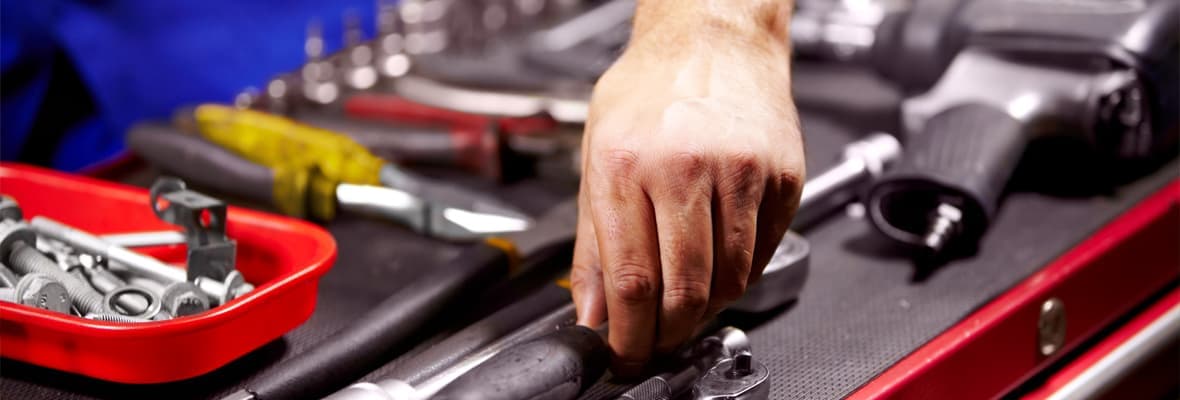Related articles
- How to change a car tyre
- Broken Down Car? Here’s What To Do
- How to change a car battery
- 16 things to put in a car emergency kit
- Roadside assistance buying guide
- What to do if your car breaks down on a highway
- How to get your car unstuck from mud or sand
- Australia Day road trips survey 2021
- Best road trips Australia
- Roadside Assistance Survey and Statistics 2024
- Tips for maintaining your car while not in use
- Warning signs your car might break down soon
- How to check and add oil to your car
- Tyre health survey 2020
- How to get the ideal tyre pressure for your car
- How to transport your bike by car
- Common Roadside Callouts 2025
- Family Road Trips Survey and Statistics 2024
- Road Trip Planner Australia
- When should I get my brake pads replaced?
- How to Check Tyre Tread
- How Often Should You Get Your Car Serviced?
If you were about to get on a plane and fly overseas, you’d want to believe the plane had been receiving scheduled maintenance checks, wouldn’t you?
And if you were preparing to jump on a roller coaster ride, you would hope that someone had recently checked for loose bolts, electrical integrity and worn bits of track, wouldn’t you?
It’s the same with your car. While Budget Direct can provide you with roadside assistance if you break down, it’s still an inconvenience being temporarily stuck on the side of the road.
When it comes to your vehicle, prevention is a thousand times better than cure. By maintaining and regularly servicing your car, it’ll be more reliable, safer to drive and less likely to need expensive repairs.
Car maintenance and servicing basics to increase your vehicle’s longevity
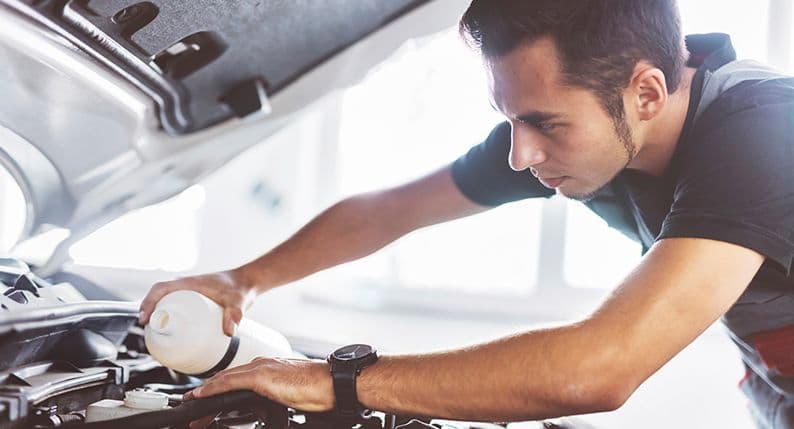
When it comes to your vehicle, prevention is 1000 times better than cure. Basic upkeep is cheaper than major repairs caused by neglect.
For some reason, lots of people neglect basic maintenance on their car. Their philosophy is “Hey, it’s running, so what’s the problem?” The excuses never end: “I just don’t have the time.” “I don’t know anything about cars”.
There are all sorts of ways to kill a perfectly good vehicle, and one of the most common is to neglect basic maintenance. Driving too long on the same spark plugs, forgetting to change the oil and turning a deaf ear to squealing brakes or mysterious clunking sounds can mean an early trip to the junkyard for your vehicle.
You can also be fined for failing to look after your car. Police at random roadworthy checks can cite you for bald tyres, faulty brake lights, a broken seat belt, a cracked windscreen and a whole host of other issues.
Keeping your car in tip-top condition keeps you safer on the road and can save you heaps of money in the long-term. When it comes to your vehicle, prevention is 1000 times better than cure. Basic upkeep is cheaper than major repairs caused by neglect.
Read the owner's manual
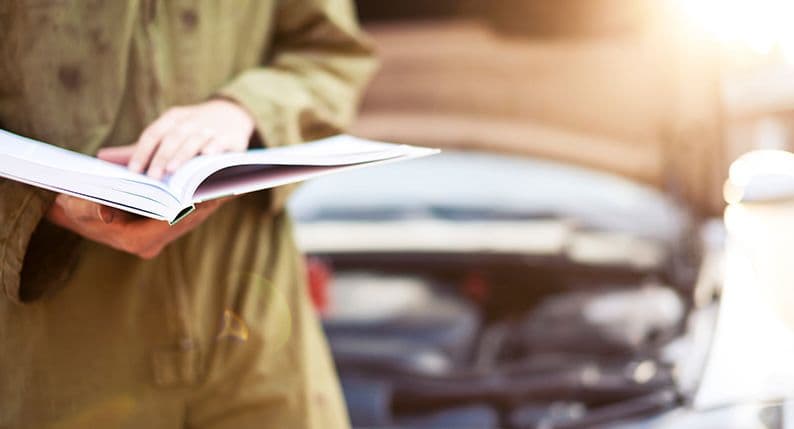
Your car service manual may not be quite as exciting to read as the latest bestselling novel, but it’s full of handy information and tips: which fluids to top up (and how often), how to check tyre pressure, what to do when your engine overheats and how to change the bulbs in your blinker lights. It will tell you how to perform basic maintenance jobs the correct way.
Don’t skip your scheduled service
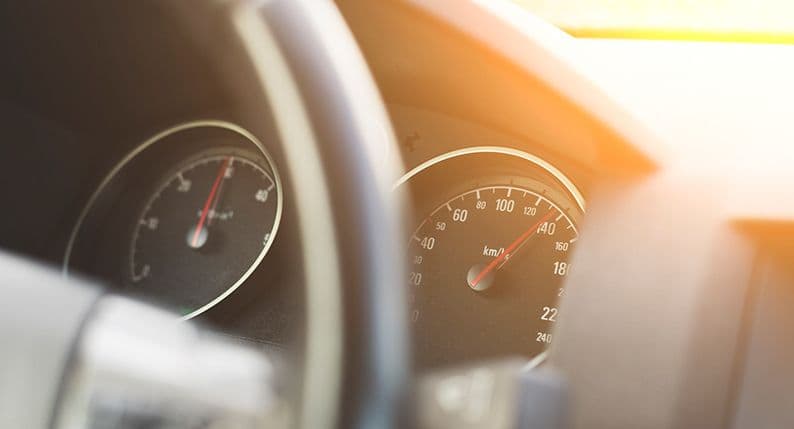
Your owner’s guide will tell you when your scheduled services are. These usually involve a thorough check of the vehicle and immediate attention to anything that needs replacing: spark plugs, timing belts, etc.
Scheduled servicing through your dealer has two major advantages:
- You know you’re getting genuine parts and expertise
- There’s a written record of the car’s service history, which becomes important for buyers when you want to sell the car in the future.
Car maintenance and servicing checklists

Vehicle technology continues to improve all the time, and car engines of today are much more advanced than what your parents grew up with. With modern, computer-controlled engine management systems, the old days of popping the bonnet, grabbing a wrench and having a ‘she’ll be right’ moment are long gone.
Even though modern car engines are a bit more complex now, the list of simple things you can do to keep your car running right are largely the same as they were half a century ago.
But even though modern car engines are a bit more complex now, the list of simple things you can do to keep your car running right are largely the same as they were half a century ago.
Basic car safety checklist
- Seatbelts — check tension and belt buckle operation
- External Lights — replace bulbs if necessary
- Handbrake — ensure that it can hold the vehicle on a slope
- Windscreens & mirrors — check windscreens and mirrors for cracks
- Windscreen wipers — check wear on wiper blades, replace if necessary
- Horn — ensure this works
- Fluids — check engine oil and engine coolant levels
- Tyres — ensure tyres are at the correct pressures, check treadwear
- Spare tyre & jack — ensure they are operational, check toolkit
Fluids checklist
- Engine oil
- Radiator coolant
- Brake fluid
- Power steering fluid
- Windscreen washer fluid
- Clutch fluid (manual cars)
- Gearbox oil
- Differential fluid
Tyres checklist
- Tyre pressures
- Treadwear and tread depth
- Spare tyre
- Car jack and tools
Lights checklist
- Headlights
- Indicators/hazard lights
- Brake lights
- Reverse lights
- Park & Fog lights
Other general things to check
- Radiator hoses — check for leaks and cracking
- Engine air filter — check that it is clean
- Battery — look for corrosion around terminals
- Fan belts — ensure none are loose or squeaking on start-up
- Unusual engine noises — hard to start, ticking, hissing or clunking
- Ensure that child seats are fitted correctly — Does your car have ISOFIX child seat anchors?
Related: Find out what cars have ISOFIX in Australia
Car maintenance item #1: Fluids
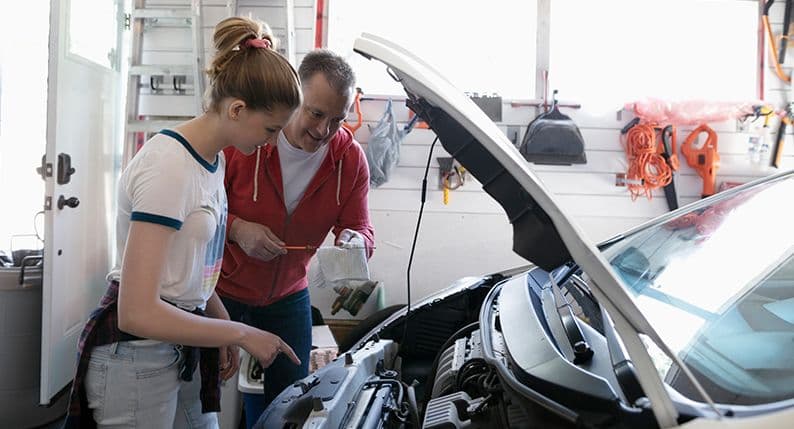
Check fluids regularly, and replace when needed.
Fluids are the lifeblood of your vehicle. If your mechanic asks you when you last changed your power steering fluid and your answer is “I’m not sure” or “What’s power steering fluid?” you probably need to brush up on the fluids your car uses.
Most cars will use the following fluids: engine oil, radiator coolant, automatic transmission fluid, windscreen washer fluid, brake fluid, clutch fluid, power steering fluid, battery electrolyte fluid (distilled water) and possibly more depending on the vehicle type. Check fluids regularly, and replace when needed.
Car maintenance item #2: Tyres
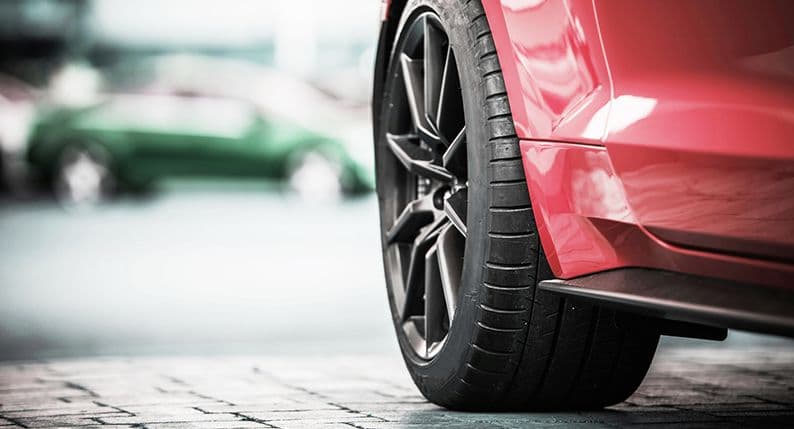
Having your tyres inflated to the correct pressure increases the life of your tyres and reduces fuel consumption.
Tyre gauges are cheap and easy to use. If you feel your car pulling to one side when you drive, you may be overdue for a wheel alignment and balance as well.
And a good way to extend the life of all your tyres is to have them rotated regularly to reduce uneven wear.
You can also prepare for flat tyres by reading our guide to changing a car tyre.
Car maintenance item #3: Wipers
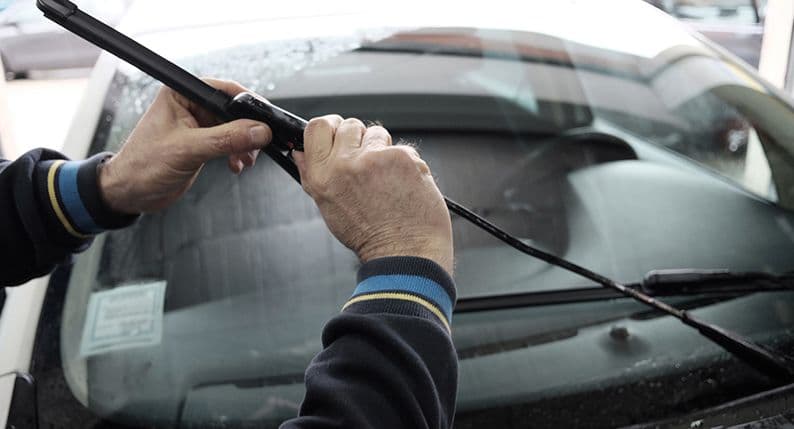
If John Howard was Prime Minister the last time you changed the rubber on your windscreen wipers, it may be time to splurge on some new wiper blades.
In Australia’s harsh climate, wiper blades should be changed at least once a year – and sooner if you’re having trouble seeing through your windscreen properly.
Spend that little bit of extra money on some quality blades – you’ll notice the difference.
Car maintenance item #4: Engine air filter
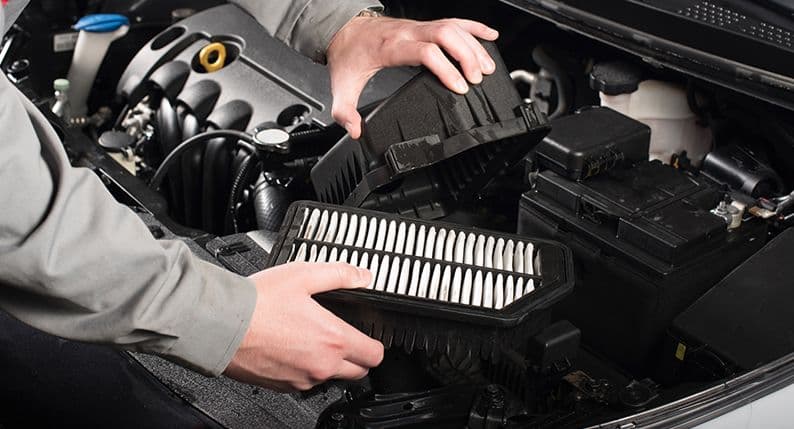
Think of your air filter as your car’s lungs. If it’s clogged up with dust, it will be letting dirty air into your engine, reducing its performance.
Some air filters are easy to reach and change yourself while others are less accessible, in which case you might get the local auto shop to do it for you. Your owner’s manual will tell you how often it needs changing.
Generally, the more stop-start driving you do and the dustier the roads you drive on, the more often it’ll need a change.
Car maintenance item #5: Cleaning
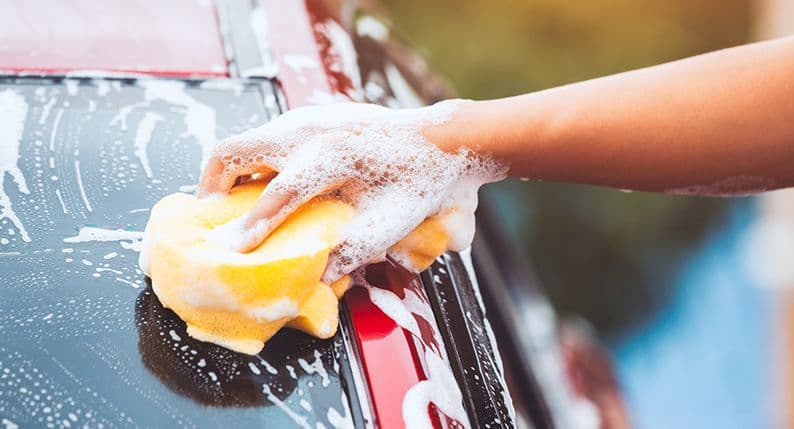
Your car’s exterior should be washed regularly, especially if you park under sap-dropping trees or have fruit bats in your neighbourhood. Bat droppings and sap can ruin your paint job if not removed quickly.
An untidy car interior can attract cockroaches, turn off your hot date and make your car smell funny. Enough said.
Car maintenance item #6: Battery
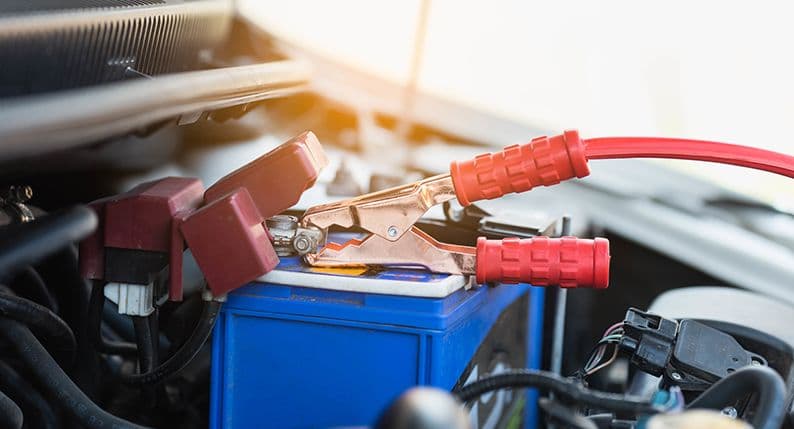
Car batteries have a habit of conking out when you need them most, so it pays to (a) keep track of how old they are, (b) check the terminals for corrosion whenever you open the bonnet and (c) top up the battery fluid when necessary. Use distilled water and don’t overfill.
Infrequent use of a vehicle can result in battery drain, so always run your car now and again. And be careful of that flaky powder around a corroded battery terminal — it’s dangerously acidic.
If your car battery is old and you want to change it yourself, read our guide to replacing a car battery.
Common mistakes that can cause damage to your vehicle
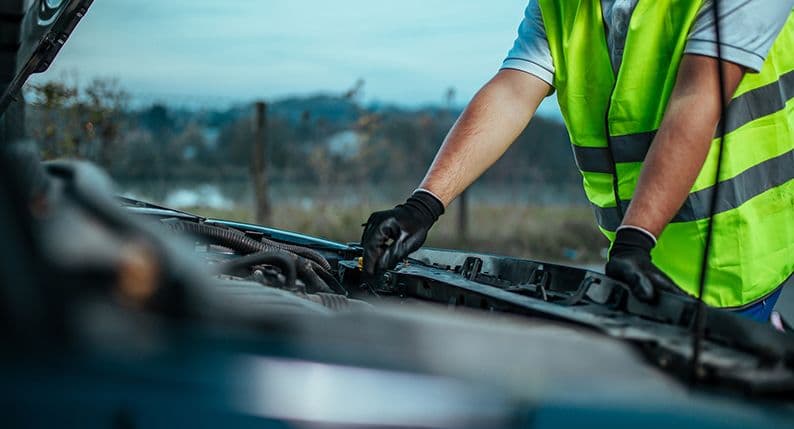
As a proud car owner, you want your vehicle to last as long as possible. In looking after it, the first rule is ‘do no harm’. Here are some blunders to avoid:
Riding your brakes down a long hill
Brake pads wear faster when they heat up, and a sure way to get them super-hot is to ride them all the way down a long hill. A better method is to alternate between braking and letting off the brake.
This is much easier on your brake pads, which won’t keep you safe if they’re worn down to nothing.
Using a pressure washer on your engine
Pressure washers are great for cleaning the grime off your concrete driveway – but not so great for cleaning your car engine, which is a complex piece of equipment with all sorts of small wires, sensors and components.
A high powered jet of water can dislodge electrical bits, hoses and rubber seals in an instant, and is simply a bad idea.
A few rags and some degreaser fluid is all you really need to clean a grimy engine and you probably only have to do this once or twice a year.
Forgetting to change your oil
This must be the most common mental lapse for car owners – leaving their oil change until the engine’s lubricant looks something like sludgy black molasses.
Old engine oil does your car no good at all, so you should change your oil as often as your car manual suggests (and this frequency varies between models). And don’t forget to change the oil filter now and then too.
Neglecting to use the parking brake
Whether you’re parked on a steep hill or reasonably flat ground, you should always use the parking brake.
Aside from obvious safety reasons, using the park brake takes the strain off your transmission — which is not designed to hold your car steady. Something as simple as getting into the habit of using your park brake can potentially add years to the life of your car.
Ignoring those funny sounds
If you let it, your car can talk to you. And if you listen carefully, you can work out what it’s trying to say. That squeak every time you open the passenger door means you need to oil the door hinges. That thumping sound can mean a loose exhaust pipe.
That whining noise can indicate a worn transmission. And that high-pitched squeal you hear when you put on the brakes is serious — it’s a sure sign your brake pads need replacing. Always listen to your car — it will often give you a clue when something isn’t working right.
Shifting from Reverse to Drive before you’ve come to a full stop
What’s one of the best ways to add months of unnecessary wear to your transmission within just a few seconds? It’s by being in too much of a hurry and switching from Reverse to Drive (or vice versa) while your car is still slowly moving.
You’re basically putting an incredible amount of strain on your gears by asking them to perform the same function as a brake. This can lead to a worn transmission, damaged drive shafts and sloppy suspension handling.
Putting stress on your car engine when you start it
When you start your car, you should ideally have your windscreen wipers, radio, air conditioning and any other accessories off. That way, your engine doesn’t have to work so hard to get going.
The maximum wear on a car engine occurs when you start it, so give it a break when you’re turning the ignition key. Also, don’t rev your engine to ‘warm up the car’ in winter.
This does more harm than good, because it doesn’t give the engine oil time to work its way through the system.
Instead, just idle the car normally for a minute or two before heading off. Car engines, like people, don’t respond well to quick, extreme temperature changes.
Continuing to drive when the car is overheating
Here’s the scenario: you’re driving along the road and notice your temperature gauge has climbed into ‘HOT’. You could stop right then and there and call a tow truck, but you keep driving in the hope that the car will be okay until you can get to a repair shop.
Before you know it, coolant is gushing out of the overflow tank and the engine overheats so much that the vehicle stalls and won’t go any further. So you end up having to ring a towing service anyway.
When your car suddenly overheats, stop ASAP, because the longer you keep going, the more damage you can cause and the more it will cost you.
So, it turns out you’ve got a cracked cylinder head and a blown head gasket. If you had stopped at the first sign of overheating, you might have just had to pay for the installation of a new thermostat. Instead, you end up having to pay a bill of over $1000.
The moral of the story: when your car suddenly overheats, stop ASAP, because the longer you keep going, the more damage you can cause and the more it will cost you.
Things you can do at home
While there are certainly a number of maintenance-related procedures that should only be handled by a trained and licensed mechanic, not every process has the same complexity. If you don’t have a lot of money to give to your local mechanic, there are a number of maintenance procedures that can be done at home.
All it takes is some common equipment, a few minutes of spare time, and a little know-how, and you’ll be saving money on maintenance issues that would otherwise be eating away at your bank account. Here are some maintenance procedures that you can easily do today from home:
Replacing headlights
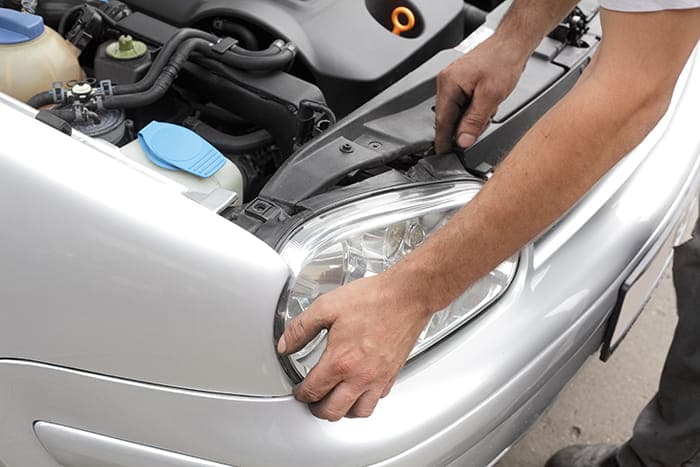
Headlights aren’t built to last forever. In fact, most are nothing more than incandescent bulbs mounted on the front of a vehicle, so eventually they’re going to burn themselves out.
To replace a headlight, you first need to open your car’s bonnet (make sure that the car is not running). Remove the plastic backing from the back of the headlight. While wearing insulated gloves, remove the electrical connectors from the back of the bulb. The bulb should be removable at this point. Don’t remove your gloves; oils from your hands can actually damage the new bulb, so be sure to only handle it with gloved hands. Place the new bulb where the old one had been, and replace the electrical connector and the plastic backing. Once everything is secure, turn on your car’s headlamps so that you can be sure that the new bulb is working properly.
Changing a battery
The average car battery has a life-expectancy of 3.5–5 years, meaning that you’re probably going to have to deal with the process of replacing one at least once during your ownership of your car. Replacing a defunct battery is not difficult, but can be dangerous. Be sure to wear insulated gloves and protective eye-gear, and to consult your vehicle’s owner manual before you begin the process.
Make sure that the car is turned off completely before beginning the procedure. Start by opening your car’s bonnet and locating the battery. Use battery pliers or a battery wrench to loosen the nut holding the black cable in place. Twist the black cable while pulling up on it to remove it from the wire (if the cable doesn’t come free, you may either have to scrub away some of the corrosion holding it in place, or use a battery terminal puller, so as not to damage the cables). Using the same method, detach the red cable.
Use a socket wrench to remove the clamp holding the battery in place. Lift the battery free from its housing, and set it aside (do not throw the battery away; instead, take it to a local automotive store and have them recycle it). If there is corrosion left behind after removing the battery, use a mixture of bi-carbonate soda and water to scrub it away. Allow the casing to dry. Place the new battery in the tray, and re-secure the holding clamp. Attach and secure the red cable to the positive (+) connector, and then attach and secure the black cable to the negative (-) connector. Make sure that both cables are totally secure and immovable. Test the battery connections by starting your car. Close the bonnet.
Replacing windscreen wipers
Windscreen wipers are only designed to last for about a year (give or take, depending upon your local weather conditions). Replacing a windscreen wiper may be the easiest car maintenance procedure you’ll ever do.
Despite this, many car owners still prefer to pay mechanics and automotive dealerships to replace the wipers for them. To replace a wiper, start by purchasing your replacement blades. Not all blades are the same, so know beforehand the exact make and model of your vehicle. Find a pair of blades that are compatible with your car.
Pull your car’s wiper assemblies up and away from the windscreen. Turn the blades so that the hinge is visible. Pull on the tab that is located on the hinge of the blade so that it disengages from the wiper. Pull the wiper down towards the windscreen to separate the wiper from the arm. Remove the blade completely. Attach the new wipers in the same way that the old ones were attached (consult your car’s manual if you’re having trouble). The wiper hinge should make an audible click once the wiper is secure. Do this for both wipers, and then lay the entire assembly back against the windscreen. Clean the windscreen with a quality glass cleaner before testing the new wiper.
Replacing an air filter
Air filters make it possible for your engine to draw clean air into itself free of debris. Dirty air filters can reduce fuel efficiency and cause strain to other parts of your engine. To replace an air filter, first make sure that your car isn’t running. Open the car bonnet, and locate the air filter housing (your car manual can show you where to find it, and what it looks like). Open the air filter housing, and remove the old filter. Using an old rag, clean out the air box. Place the new filter into the housing, and then replace and secure the lid. Close the bonnet.
Of course, if your car starts having problems and you’re not sure what to do about it, it’s usually best to take it to a professional. After all, the last thing you want to do is make matters worse by tinkering around inside your car when you don’t know what you’re doing. Car maintenance is a complex issue—one that requires an in-depth understanding of how a car works. Understanding the facts associated with automobile maintenance may give you a clearer understanding of that complexity.
Conclusion
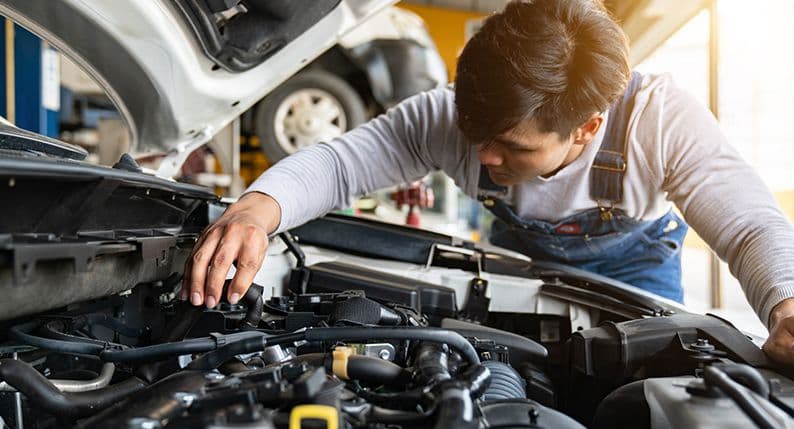
If you look under your bonnet regularly, listen for unusual car noises, check underneath the car for new and mysterious leaks now and then, follow the service schedule in your owner’s manual and take care of small problems before they become major ones, you’ll be well ahead of the game as far as keeping your car running smoothly.
And remember that even a perfectly maintained vehicle can break down unexpectedly. So you may wish to consider getting roadside assistance from Budget Direct. For just $89.95 per year — the equivalent of $1.75 a week — you’ll be able to call on a national network of more than 2,500 roadside contractors.
Related articles
- How to change a car tyre
- Broken Down Car? Here’s What To Do
- How to change a car battery
- 16 things to put in a car emergency kit
- Roadside assistance buying guide
- What to do if your car breaks down on a highway
- How to get your car unstuck from mud or sand
- Australia Day road trips survey 2021
- Best road trips Australia
- Roadside Assistance Survey and Statistics 2024
- Tips for maintaining your car while not in use
- Warning signs your car might break down soon
- How to check and add oil to your car
- Tyre health survey 2020
- How to get the ideal tyre pressure for your car
- How to transport your bike by car
- Common Roadside Callouts 2025
- Family Road Trips Survey and Statistics 2024
- Road Trip Planner Australia
- When should I get my brake pads replaced?
- How to Check Tyre Tread
- How Often Should You Get Your Car Serviced?
